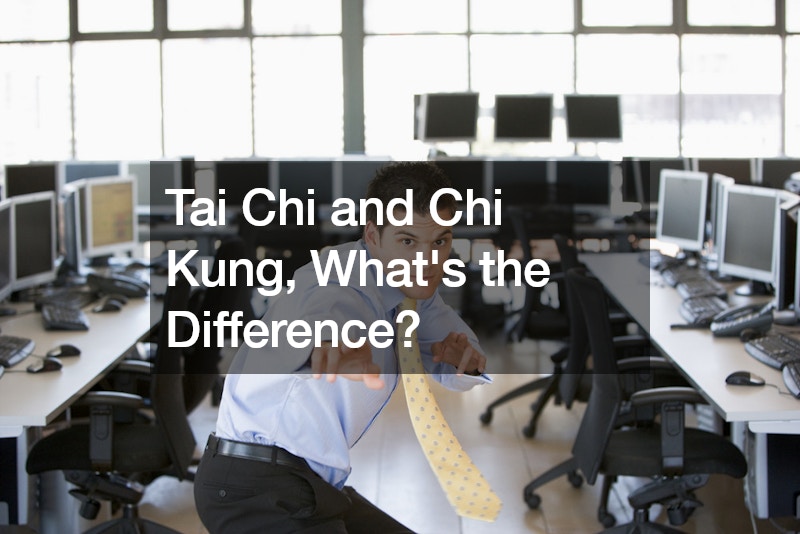Tai Chi and Qi Gong (also spelled as “Chi Kung“) are two ancient Chinese practices that have gained global recognition for their numerous health benefits. While they share similarities in their origins and principles, there are distinct differences between the two disciplines.
Tai Chi, often portrayed as a slow and graceful form of exercise, has its roots deeply embedded in Chinese martial arts. Its origins are shrouded in legend, dating back possibly as far as the 8th century.
Today, various styles of Tai Chi exist, including Chen, Yang, and Wu styles, each with its own unique expression while sharing a common set of postures and movements. These movements, performed in slow synchronization, are not merely for physical exercise; they encompass a holistic approach to health and well-being.
What is Tai Chi?
One of the fundamental aspects of Tai Chi is the cultivation of internal power. Unlike traditional Western exercises that emphasize muscle size and strength, Tai Chi focuses on utilizing the skeletal structure, joints, and tendons to deliver efficient movements. Practitioners learn to coordinate their mental intention, breathing, posture, and full-body movements to achieve a state of powerful relaxation. The metaphor often used is that of a tree with roots sinking deeply into the earth, symbolizing stability, and branches that are flexible and light, representing agility and adaptability.
An adept Tai Chi practitioner embodies this balance, being as immovable as a tree trunk yet as flexible, fast, and powerful as a tree branch swaying in the wind. This harmonization of body and mind not only enhances physical health but also promotes mental clarity and emotional well-being. Tai Chi’s philosophy is deeply rooted in traditional Chinese medicine and Taoist principles, emphasizing the interconnectedness of mind, body, and spirit.
What is Qi Gong?
On the other hand, Qi Gong is a broader term that encompasses various practices aimed at cultivating and balancing one’s vital life energy, known as “chi” or “qi.” While Tai Chi incorporates Qi Gong principles, Qi Gong can be practiced independently of Tai Chi. Qi Gong exercises typically involve gentle movements, breathing techniques, and meditation to promote the flow of chi throughout the body.
One key distinction between Tai Chi and Qi Gong lies in their focus and purpose. Tai Chi is primarily a martial art with a strong emphasis on physical movement and combat applications. In contrast, Qi Gong places greater emphasis on internal energy cultivation and healing. While Tai Chi can be practiced for self-defense, fitness, or meditation, Qi Gong is primarily practiced for health maintenance, stress reduction, and spiritual development.
Another difference lies in the complexity of the movements and postures. Tai Chi forms can be intricate and challenging to master, requiring years of practice to achieve proficiency. In contrast, Qi Gong exercises are generally simpler and more accessible, making them suitable for people of all ages and fitness levels. Qi Gong emphasizes relaxation, mindfulness, and the cultivation of inner peace, making it particularly beneficial for reducing stress and promoting overall well-being.
Furthermore, the concept of chi energy in Qi Gong encompasses various levels, from the measurable electrical current in acupuncture points to the subtle energy that can travel thousands of miles instantly. While the scientific research on chi energy is still evolving, numerous studies conducted in China, Russia, and the USA have demonstrated its potential effects on health and healing.
Chi and Science
Scientific exploration into the concept of chi energy, or qi, has garnered increasing interest in recent years, with studies conducted across different regions providing valuable insights into its potential effects on health and healing. In China, where traditional Chinese medicine has a long-standing history, researchers have conducted extensive investigations into the mechanisms underlying the flow of chi energy within the body. These studies have explored the relationship between chi energy and various aspects of health, including the immune system, cardiovascular function, and stress response.
Similarly, research efforts in Russia and the USA have contributed to our understanding of chi energy from different perspectives. Russian scientists have focused on measuring the electromagnetic frequencies associated with chi energy and its potential impact on cellular function and communication. Meanwhile, research conducted in the USA has explored the effects of practices like Qi Gong and Tai Chi on physiological parameters such as blood pressure, heart rate variability, and hormone levels.
While the scientific community continues to debate the nature of chi energy and its mechanisms of action, the accumulating evidence suggests that practices aimed at cultivating and balancing chi energy may indeed offer tangible benefits for health and healing. Further interdisciplinary research is needed to elucidate the underlying mechanisms and optimize the integration of these ancient practices into modern healthcare approaches.
Wrapping Up
In conclusion, while Tai Chi and Qi Gong share common roots in Chinese culture and philosophy, they differ in their focus, purpose, and practice. Tai Chi is a martial art that emphasizes physical movement and combat applications, while Qi Gong focuses on internal energy cultivation and healing. Both disciplines offer profound benefits for physical, mental, and emotional well-being, making them valuable practices for individuals seeking holistic health and vitality. Whether one chooses to practice Tai Chi, Qi Gong, or both, the journey towards balance, harmony, and self-discovery awaits.
.


